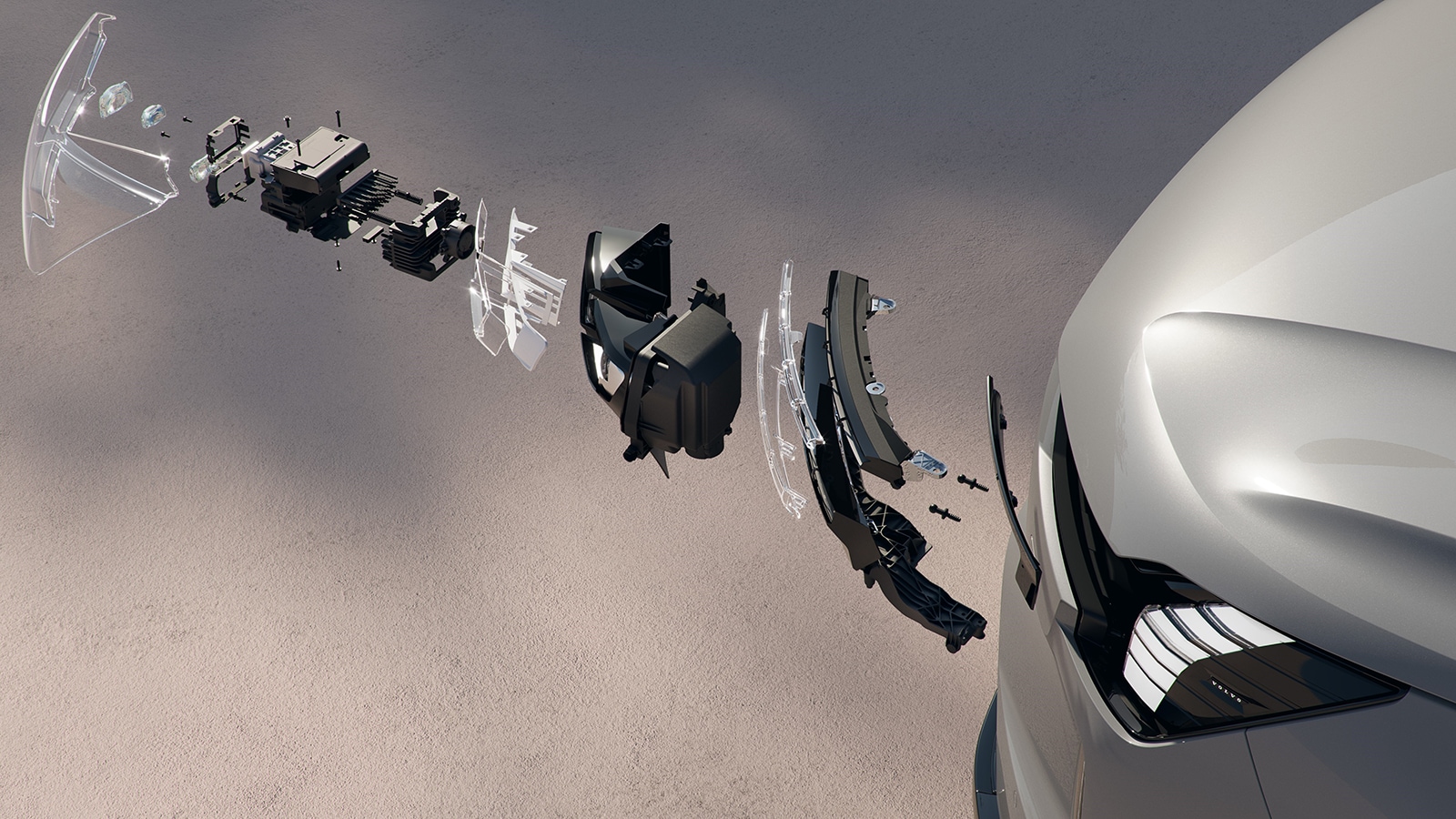The annual CES expo has concluded, and as we shift our focus back to other industry developments, let’s recap some notable technologies unveiled or updated at this year’s event. Information was gathered from briefings and discussions with over 40 of the 4,300 exhibitors.
The Lotus Esprit and C5 Chevy Corvette were the last cars featuring mechanical headlamps or covers. However, supplier ZKW is set to equip the upcoming Volvo EX-90 with “eyelids” hosting LED daytime running lamps. These cover the high- and low-beam lamps when not in use, presenting the traditional Thor’s Hammer look. The mechanism is safely housed behind a lens, providing protection against external elements.

Unlocking the vehicle initiates a sequence where individual DRL elements flash before the eyelids open to reveal the high beam, accompanied by a flashing effect.
Transparent displays emerged as a prominent trend at CES 2024, with at least two competing technologies showcased in the automotive sector. Korean display supplier AUO, a first-time exhibitor, employed microLED for its transparent display laminated in a side window. This technology allows content to be visible from both inside and outside the vehicle.
Roof module supplier Webasto introduced a concept panoramic roof featuring a rear-passenger fold-down rail-to-rail display screen akin to those in BMW 7 Series cars. Notably, this screen permits sunlight and an unobstructed view when folded against the panoramic roof, providing relief from car sickness. Viewers watching the screen can also see a part of the horizon through the displayed image.
Building on Gentex’s variable dimming glass, which the Boeing 787 Dreamliner utilizes, the company showcased a variable-dimming visor with a vanity mirror mode. This visor includes an electrochromic layer, clear when “off” and dark when powered, along with two LCD layers for the reflective glass surface to function as a mirror. The polarizers, oriented 90 degrees out of phase, ensure that light is blocked when in mirror mode. Durability testing is underway, with potential production in three to four years.
A standout term from CES 2024 was “Phygital,” a blend of physical and digital. Tier 1 supplier Forvia, a merger of Faurecia and Hella, demonstrated screens for the front and rear of the car, enabling communication with other road users. Utilizing a matrix of isosceles triangles with red and white LEDs, these screens produce high-resolution messages, particularly effective when the lettering is angled over the sides of the triangles. Brightness reaches 6,000 Nits.
In the low-voltage battery space (12-60 volts), Clarios introduced a sodium-ion battery, boasting a lower cost than lithium-ion. The composition includes sustainable materials such as salt, wood, iron, and air, providing higher peak performance than lead-acid batteries. This sodium-ion battery offers longer service life and reduced fire risk compared to lithium-ion batteries.
As the automotive industry transitions away from diesel towards BEV and FCEV for commercial trucking, Schaeffler addresses concerns about particulate matter generated by traditional dry friction brakes. They presented an integrated wet brake resembling an automatic transmission clutch at each wheel corner, filled with fluid. These brakes are designed to last the vehicle’s entire lifespan. The potential adoption of such brakes in passenger vehicles remains uncertain, considering some windage losses from fluid shear between friction and steel plates.

